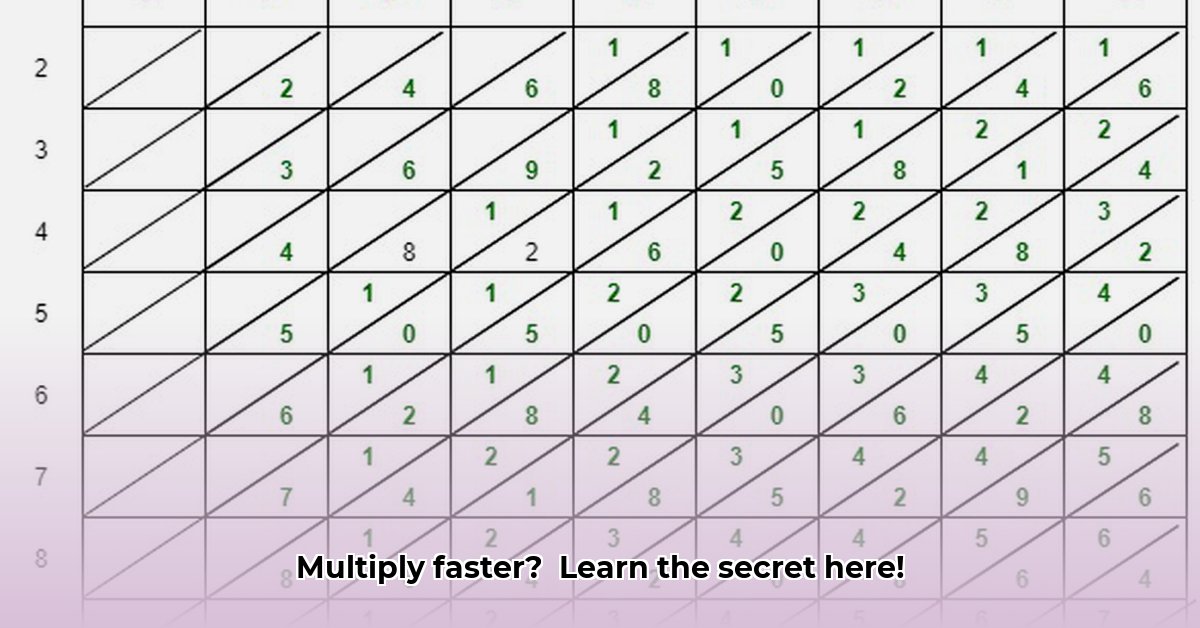
Online Multiplication Calculators: Your Path to Multiplication Mastery
Multiplying large numbers can be challenging, but online multiplication calculators offer a powerful solution. For example, see how easily you can solve 500 x 12 with a calculator like this one: 500 x 12 example. This guide explores how these tools work, comparing different types and offering step-by-step instructions for effective use. Whether you're a student, educator, or simply looking to improve your multiplication skills, this guide will empower you to multiply faster and with greater understanding.
Two Approaches to Multiplication: Finding Your Best Fit
Imagine learning multiplication as a journey. Two paths lead to the same destination—the correct answer—but each offers a unique perspective.
The standard algorithm method mirrors the traditional, step-by-step approach taught in schools. It's a structured, sequential process, breaking down complex problems into smaller, manageable parts. This method is familiar and provides a sense of order and predictability.
The partial products method offers a more visual and conceptual approach. This method breaks the problem into smaller, more easily digested pieces (partial products), which are then added together to find the final answer. This approach allows for a deeper understanding of why the algorithm works, enhancing conceptual learning.
The "best" method depends on individual learning styles and preferences. Some learners thrive on the structured nature of the standard algorithm, while others find the visual clarity of the partial products method more intuitive.
Choosing Your Calculator: A Comparative Analysis
Let's compare these two calculator types to help you choose the right tool for your needs:
| Feature | Standard Algorithm Calculator | Partial Products Calculator |
|---|---|---|
| Approach | Follows the traditional multiplication algorithm. | Breaks the problem into smaller, manageable parts (partial products). |
| Best For | Learners who prefer clear, sequential steps. | Learners who benefit from visual understanding and conceptual clarity. |
| Strengths | Familiar, builds confidence, easy to follow for step-by-step learners. | Builds conceptual understanding, visually engaging, promotes deeper comprehension. |
| Weaknesses | Can feel repetitive, less intuitive for some, minimal conceptual emphasis. | May be initially challenging for those unaccustomed to breaking down problems. |
Mastering Multi-Digit Multiplication: A Practical Guide
Regardless of calculator type, this step-by-step guide will help you maximize your use:
Input Your Numbers: Enter the numbers you want to multiply into the designated fields. Most online calculators have user-friendly interfaces.
Observe the Process: Carefully watch how the calculator solves the problem. Note the steps involved and try to understand the logic behind each calculation.
Uncover the Logic: Don't just look at the final answer. Understanding the underlying logic is key to genuine learning and developing a strong grasp of multiplication.
Practice Regularly: Experiment with various numbers and both calculator types. Consistent practice is essential for improving speed and accuracy. "Practice makes perfect!" as the old saying goes.
Beyond the Calculator: Building a Solid Foundation
While online calculators are invaluable tools, they shouldn't replace a fundamental understanding of multiplication facts and methods. They serve as excellent aids for checking work, exploring different strategies, and reinforcing learning, but mastering multiplication requires a strong foundation of mathematical concepts.
How to Choose the Best Online Calculator for Teaching Multi-Digit Multiplication
Key Takeaways:
- Online calculators provide visual representations of multi-digit multiplication, enhancing comprehension.
- Calculators offer diverse approaches: some demonstrate algorithms, others emphasize practice.
- The best choice depends on your learning goals and students’ individual needs.
- Consider factors such as visual aids, age appropriateness, and alignment with your curriculum.
- A balanced approach that effectively combines demonstration and practice often leads to the most impactful learning outcomes.
Evaluating Online Multiplication Calculators: A Structured Approach
Before selecting a calculator, assess its suitability using this framework:
Ease of Use: Is the interface intuitive and student-friendly? Can students easily input numbers and interpret the results?
Visual Clarity: Does the calculator clearly illustrate the multiplication process? Are steps easy to follow? Are visual aids (diagrams, animations) effectively used?
Feedback Mechanisms: Does the calculator offer feedback on accuracy? Is the feedback constructive and helpful for learning?
Customization: Can you adjust difficulty levels, problem types, or the number of problems? Flexibility caters to diverse learning needs.
Integrating Calculators into Your Curriculum: A Strategic Approach
To maximize the learning potential of online calculators, integrate them strategically into your curriculum:
Demonstration: Begin with a calculator that visually demonstrates the multiplication process to build conceptual understanding.
Practice: Transition to calculators emphasizing practice to build proficiency and fluency.
Assessment: Evaluate student understanding to track progress and identify areas needing further attention.
Effective integration is paramount for ensuring that online calculators enhance—and don't just supplement—learning. Remember that effective technology use requires thoughtful planning and integration into a well-defined pedagogical framework.